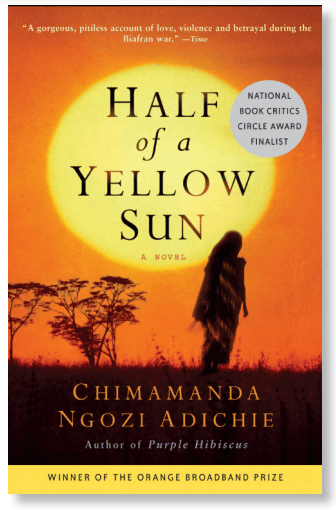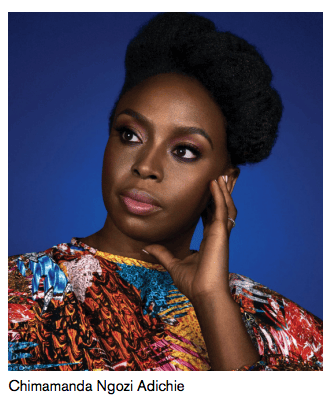Half of a Yellow Sun by Chimamanda Ngozi Adichie is a profound and evocative novel set during the Nigerian Civil War (Biafran War) in the 1960s. This acclaimed work, which earned Adichie the Women’s Prize for Fiction in 2007, is brought to life through Adjoa Andoh’s compelling narration, adding a rich layer to the storytelling.
The novel intricately follows the lives of three central characters:
Ugwu is a young boy from a poor rural village who secures a position as a houseboy for Odenigbo, a charismatic university professor and fervent supporter of the Biafran secessionist movement. Ugwu’s experiences in Odenigbo’s household introduce him to new social and political realities, marking the beginning of his transformation from a naive child into a more aware young adult. His narrative offers a window into the impact of the war on ordinary people and the harsh realities of life during the conflict.
Olanna is Odenigbo’s partner, an educated woman from a privileged family. Her initial life in Lagos is one of relative comfort, but this changes dramatically as the war progresses. Olanna’s relationship with her twin sister, Kainene, is fraught with both affection and tension, reflecting their differing values and personalities. Kainene, a pragmatic and businessoriented woman, becomes deeply involved in the Biafran cause, working to support the war effort. As the conflict escalates, Olanna’s once-secure world unravels, forcing her to confront personal and ethical dilemmas while trying to protect her family.
Richard is a British expatriate and artist who falls in love with Kainene. His outsider’s perspective provides an additional layer of insight into the war’s impact. Richard becomes entangled in the Biafran cause, using his artistic skills to document and support the struggle. His narrative captures the perspective of a foreigner deeply affected by the events unfolding around him, offering a unique view on the international dimension of the conflict.
As the war erupts, the narrative powerfully captures the ensuing turmoil. Ugwu witnesses the war’s brutal effects firsthand, while Olanna and Kainene grapple with personal and emotional upheavals. Richard’s involvement in the Biafran cause brings him face-to-face with the war’s harsh realities and its human cost.
Half of a Yellow Sun stands as a testament to Chimamanda Ngozi Adichie’s exceptional storytelling ability. Adichie’s portrayal of the Nigerian Civil War is both vivid and empathetic, capturing the devastating impact of the conflict on individuals and communities. Her detailed depiction of the war’s consequences is both harrowing and enlightening, offering readers a deep understanding of this turbulent period through the lens of its characters.
The novel is undeniably a somber and often heart-wrenching read. Adichie does not shy away from depicting the harrowing realities of the conflict, including the violence, starvation, and displacement that plagued Nigeria during this tumultuous period. The emotional weight of the novel is deeply felt throughout the narrative, highlighting themes of love, loyalty, and survival amidst the chaos.
By integrating personal stories with historical events, Adichie creates a powerful and immersive reading experience. Half of a Yellow Sun remains a significant and moving work in contemporary literature, showcasing Adichie’s ability to blend emotional depth with historical context.





